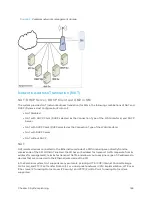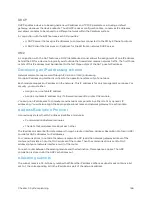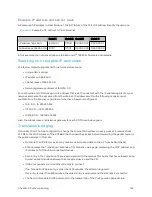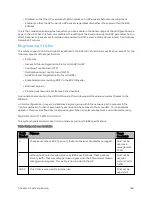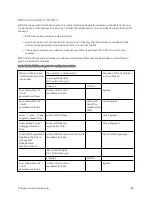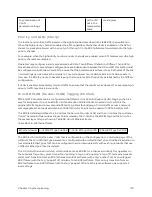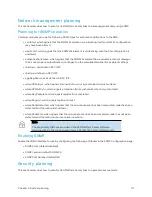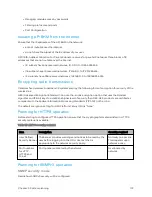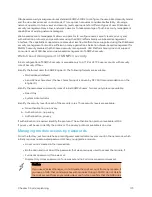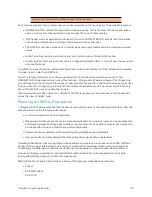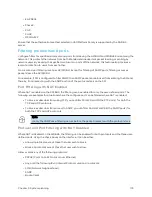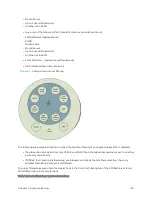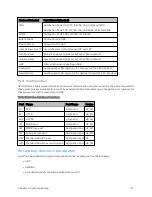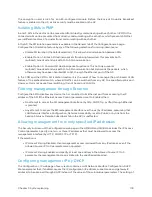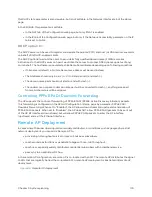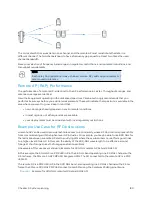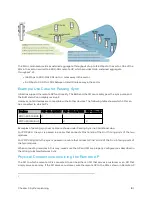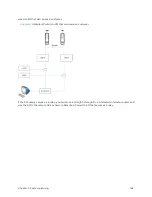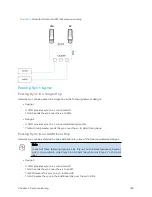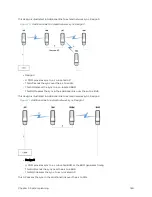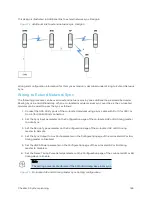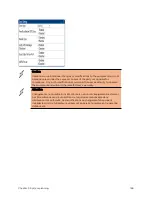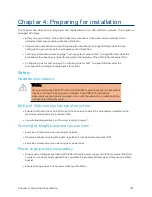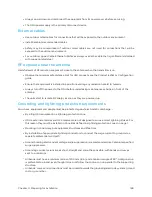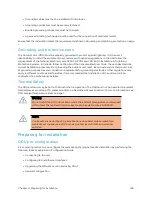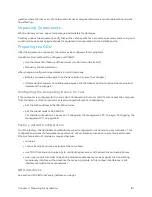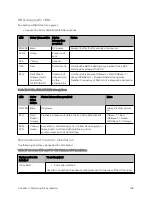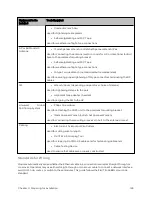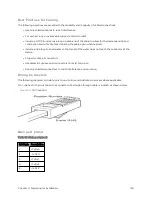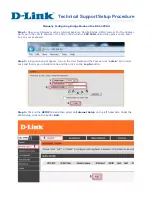
Chapter 3: System planning
179
this DHCP state parameter is also viewable, but is not settable, in the Network Interface tab of the Home
page.
In the SM/BHS, this parameter is settable
l
in the NAT tab of the Configuration web page, but only if NAT is enabled.
l
in the IP tab of the Configuration web page, but only if the Network Accessibility parameter in the IP
tab is set to Public.
DHCP opt ion 81
The DHCP server can be used to register and update the pointer (PTR) and host (A) DNS resource records
on behalf of its DHCP-enabled clients.
The DHCP option 81 permits the client to provide its fully qualified domain name (FQDN) as well as
instructions to the DHCP server on how it would like the server to process DNS dynamic updates (if any)
on its behalf. The hostname is populated as SiteName.DomainName depending upon following conditions:
l
If Sitename is default i.e. No Site Name, mac address will be used instead.
l
The SiteName should only be a-z | A-Z | 0-9 and period(.) and dash (-).
l
The domain name part should not start or end with dash (-).
l
The underscore or space in domain name part will be converted to dash (-), anything else apart
from valid characters will be skipped.
Cont r olling PPPoE PA DI Dow nlink For w ar d ing
The AP supports the control of forwarding of PPPoE PADI (PPPoE Active Discovery Initiation) packets.
This forwarding is configured on the AP GUI Configuration > Radio page by parameter PPPoE PADI
Downlink Forwarding. When set to “Enabled”, the AP allows downstream and upstream transmission of
PPPoE PADI packets. When set to “Disabled”, the AP does NOT allow PPPoE PADI packets to be sent out
of the AP RF interface (downstream) but will allow PPPoE PADI packets to enter the RF interface
(upstream) and exit the Ethernet interface.
Rem o t e A P Dep lo y m ent
In cases where the subscriber population is widely distributed, or conditions such as geography restrict
network deployment, you can add a Remote AP to:
l
provide high-throughput service to near LoS business subscribers.
l
reach around obstructions or penetrate foliage with non-LoS throughput.
l
reach new, especially widely distributed, residential subscribers with broadband service.
l
pass sync to an additional RF hop.
In the remote AP configuration, a remote AP is co-located with an SM. The remote AP distributes the signal
to SMs that are logically behind the co-located SM. A remote AP deployment is illustrated in Remote AP
deployment.
Figure 66 :
Remote AP deployment
Содержание PMP 450 Series
Страница 92: ...Chapter 2 System hardware 92 Figure 29 MicroPoP Omni antenna implementation pattern Vertical...
Страница 134: ...Chapter 3 System planning 134 Figure 51 Mast or tower installation...
Страница 135: ...Chapter 3 System planning 135 Figure 52 Wall installation...
Страница 136: ...Chapter 3 System planning 136 Figure 53 Roof installation...
Страница 137: ...Chapter 3 System planning 137 Figure 54 GPS receiver wall installation...
Страница 158: ...Chapter 3 System planning 158 Figure 61 cnMedusa Antenna...
Страница 258: ...Chapter 5 Installation 258 Figure 123 Yagi antenna alignment horizontally Figure 124 Yagi antenna alignment upward tilt...

